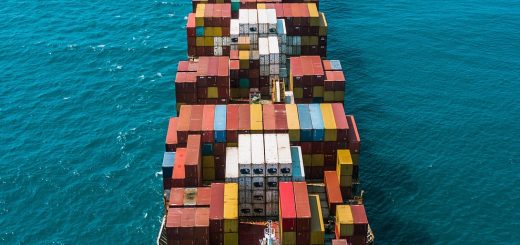Effortless Importing: How European & North American Retailers Source Unique Chinese Toys & Apparel with Smart Consolidation
Introduction: Why China Is the Go-To Hub for Unique Kids’ Products
For boutique children’s stores in Europe and North America, China has become synonymous with affordable innovation. From whimsical toys inspired by folklore to sustainably crafted apparel, Chinese manufacturers offer unparalleled variety, speed, and cost advantages. However, navigating logistics, tariffs, and language barriers can deter even the most passionate retailers. This guide unlocks the secrets to efficiently sourcing and shipping Chinese products while maximizing profitability—ideal for small businesses that want to stand out without overspending.
Chapter 1: The Allure of Chinese Children’s Products
1.1 A World of Creative Possibilities
China’s manufacturing ecosystem thrives on cultural richness and technical prowess:
- Toys: Heirloom-quality bamboo building blocks, AI-powered robotic kits, and hand-painted figurines inspired by legends like Monkey King.
- Apparel: Organic cotton onesies, embroidered jackets featuring panda motifs, and eco-dyed textiles certified by GOTS.
- Niche Trends: Educational tools (e.g., Mandarin flashcards), sustainable wooden teethers, and adaptive wear for inclusive design.
1.2 Cost Advantages Without Compromising Quality
- Bulk Pricing: Even small orders benefit from competitive rates due to China’s scale.
- Customization: OEM/ODM services allow brands to create exclusive designs (e.g., bespoke patterns or branded packaging).
- Speed: Rapid production cycles mean faster time-to-market for seasonal collections.
Chapter 2: The Hidden Challenges of Direct Sourcing
2.1 Logistics Hurdles
- High Shipping Costs: Air freight for lightweight toys can eat into profits.
- Customs Delays: Unpredictable clearance times in the EU/US.
- Language Barriers: Miscommunication with suppliers leads to errors.
2.2 Solution: Smart Consolidation
Consolidation involves grouping orders from multiple vendors into a single shipment, reducing per-unit costs. Benefits include:
- Cost Savings: Share container fees with other retailers (e.g., 500/containervs.500/containervs.200/shared container).
- Faster Transit: Prioritize shipments via express lanes.
- Enhanced Security: Tamper-proof seals and insured transit.
Chapter 3: Step-by-Step Guide to Seamless Sourcing
Step 1: Identify Niche Suppliers
- Use B2B Platforms: Alibaba.com, Global Sources, or Made-in-China.com for vetted manufacturers.
- Attend Trade Fairs: Canton Fair, Hong Kong Houseware Fair, or virtual events like CIIE.
- Verify Credentials: Ensure suppliers have ISO 9001, BSCI, or SA8000 certifications.
Step 2: Negotiate Bulk Orders (Even for Small Brands)
- Partner with other retailers to pool orders and meet minimum order quantities (MOQs).
- Example: A group of European toy stores collectively ordering custom puzzle sets.
Step 3: Choose a Consolidation Partner
Select a freight forwarder experienced in children’s goods. Key services to look for:
- Climate-Controlled Warehousing: For temperature-sensitive items (e.g., wooden toys, wool apparel).
- Customs Expertise: Navigate tariffs under rules of origin (e.g., USMCA, CETA).
- Track & Trace: Real-time monitoring via IoT devices.
Step 4: Optimize Packaging & Labeling
- Use anti-counterfeit packaging (holograms, tamper-evident seals).
- Clearly mark shipments as “Delicate” or “High-Value” to avoid mishandling.
Chapter 4: Logistics Hacks for Cost & Time Savings
4.1 Leverage Intermodal Transport
Combine rail, sea, and air:
- Rail: Use China’s CR Express service for faster land transit.
- Sea: Maersk’s Luxury Service offers climate-controlled containers.
- Air: FedEx’s “Priority Alert” for urgent restocks.
4.2 Duty Drawback Programs
For EU brands, reclaim import taxes by processing goods through free trade zones (FTZ) like Rotterdam or Dublin.
4.3 Incoterms® Made Simple
- FOB Shanghai: Supplier handles Chinese logistics; you manage international freight.
- DDP (Delivered Duty Paid): Supplier covers all costs and risks—ideal for high-value shipments.
Chapter 5: Case Studies in Successful Consolidation
Case Study 1: A Swedish Children’s Boutique
Brand: Nordic Play (fictional)
Challenge: Importing sustainable wooden toys faced high shipping costs.
Solution: Partnered with FreightHub Europe to consolidate orders quarterly. Result: -40% shipping costs, 7-day faster lead times.
Case Study 2: A Canadian Toy Retailer
Brand: Maple Toys (fictional)
Challenge: Sourcing custom plush animals from Guangdong was unreliable.
Solution: Used CFL Global’s bonded storage in Vancouver, reducing clearance time from 2 weeks to 3 days.
Chapter 6: Avoiding Compliance Headaches
6.1 CITES & REACH Compliance
- Ensure exotic materials comply with the Convention on International Trade in Endangered Species (CITES).
- Avoid restricted chemicals under EU’s REACH regulations.
6.2 Intellectual Property Protection
- Work with suppliers to register designs via China’s National Intellectual Property Administration (NIPA).
- Use blockchain platforms like VeChain to track component provenance.
Chapter 7: Future-Proofing Your Supply链
7.1 Embrace Sustainability
- Prioritize suppliers with Green Factory Certification or transitioning to renewable energy.
- Use recycled materials (e.g., ocean plastics in toy packaging).
7.2 Tech-Driven Efficiency
- AI tools like Alibaba’s Digital Supply链 predict demand and optimize inventory.
- AR try-ons reduce return rates for bespoke items.
Final Tips: Maximize Value, Minimize Risks
- Start Small, Scale Smart: Test vendors with sample orders before committing.
- Build Relationships: Visit factories to audit practices and build trust.
- Insure High-Value Shipments: Use Allianz or Chubb for full coverage.

